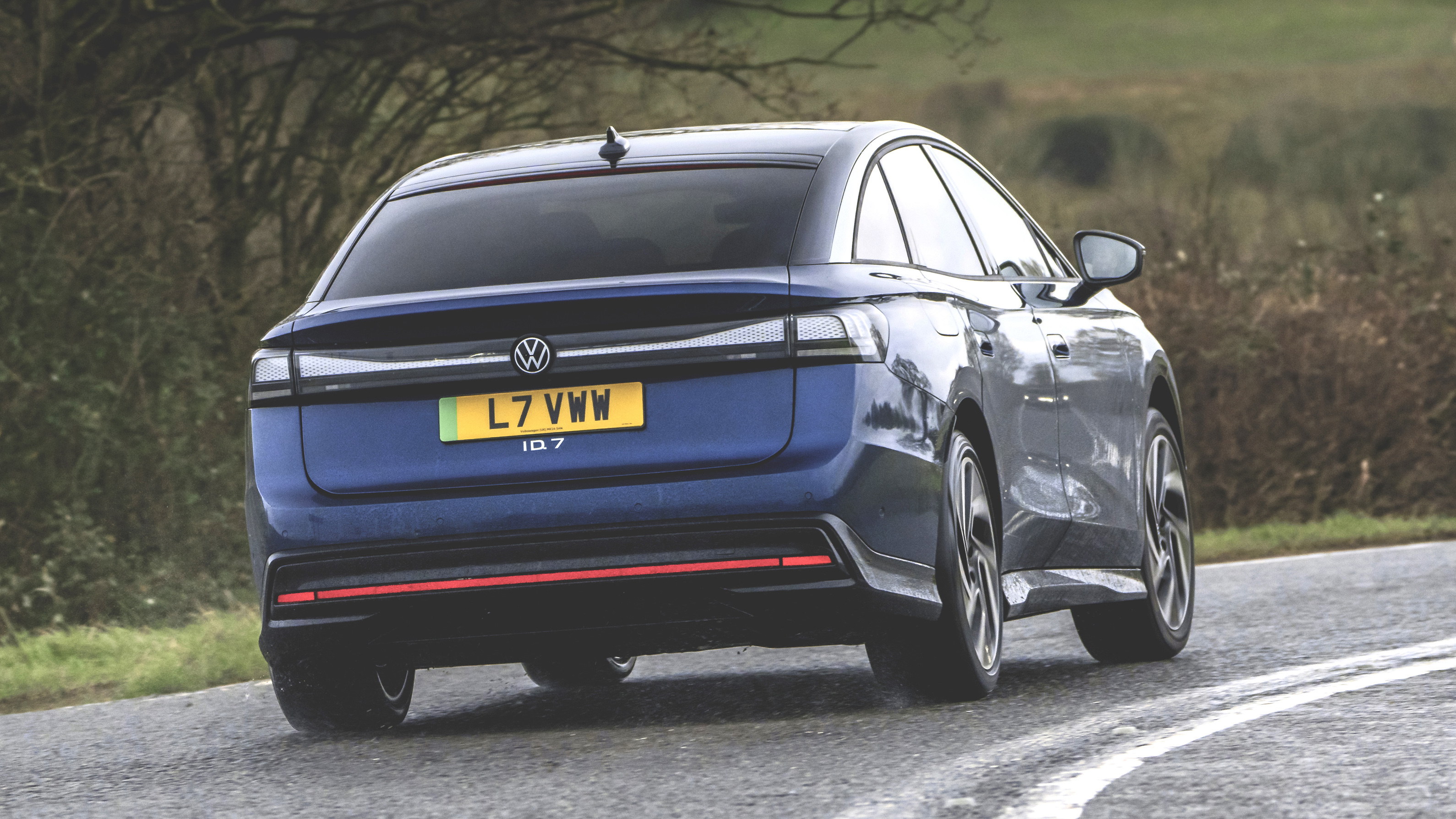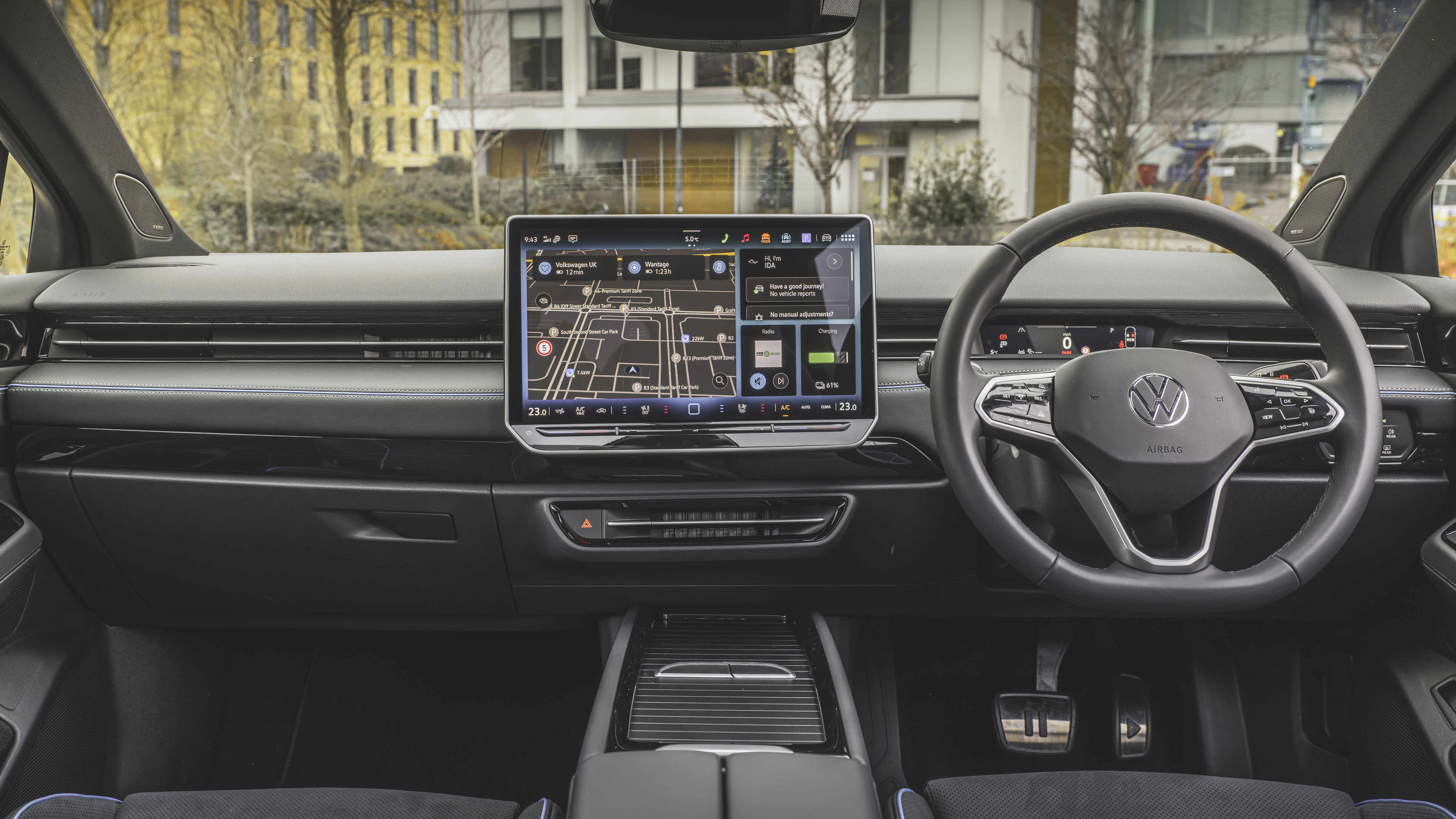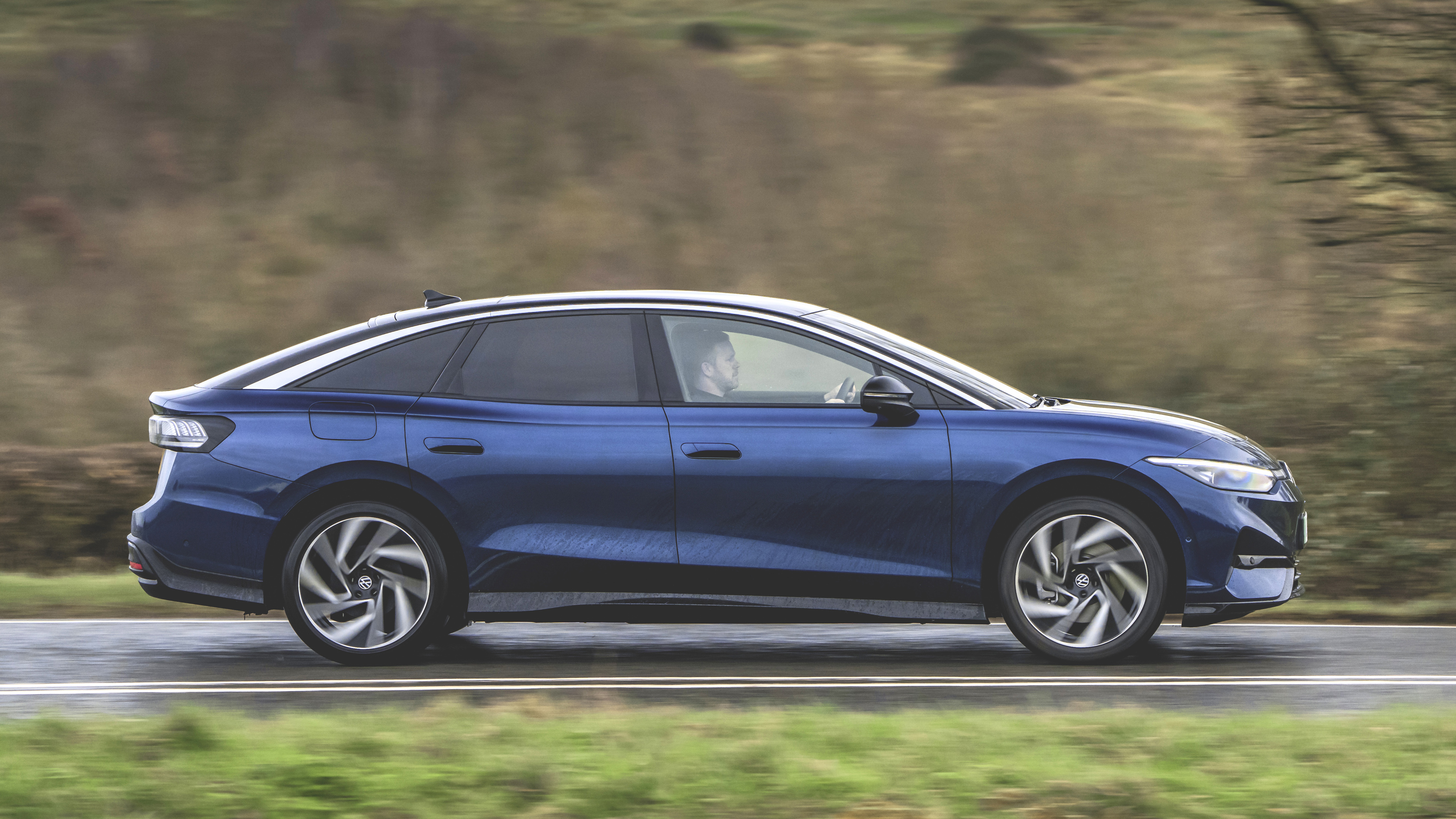
Interior
What is it like on the inside?
The front seats are excellent, with lots of support, and standard electric adjustment, heating and massage as standard. Cooling and even more massage functions are optional. In the back, there's masses of legroom provided the folks up front have lifted their seats a smidge to let your feet tuck under them. Rear headroom is fine too.
There's lots of soft, stitched plastic surfaces and good ambient lighting. But none of the brushed matte wood veneers that premium Germans specialise in. In other words, this feels like a top-end VW, not like a Mercedes. But what you lose in fancy finishes, you gain in standard equipment.
One of the few options is a huge electrochromic glass roof that goes opaque at the touch of a button.
The five-door's boot is a little shallow under the parcel shelf, but so big in area the total is a generous 532 litres, even before you start folding this hatchback's rear seats.
The estate is 605 litres under the parcel shelf. You get a net, hooks, extra underfloor storage and a through-load hatch in the backrest. Seats down, you can pile in 1,714 litres below the window line, or just shy of 2,000 litres up to the roof.
A head-up display is standard, with augmented-reality for navigation and driver assist. It projects big arrows that animate as you approach a junction, and lane markings apparently on the road. Takes a bit of getting used to, but definitely has its uses.
Then there's a relatively compact screen behind the steering wheel that shows the driving stuff, but not entertainment. And finally, the big screen…
The big central screen… still a sensitive subject?
VW has had issues with infotainment ever since the pre-facelift Mk8 Golf. Now we have a much bigger and more responsive screen, but is it any more logical and easy to use?
Mostly yes. On first acquaintance a lot of stuff is buried several menus deep. But it's configurable, so you can bring the functions you most often use to higher levels.
And several things can be reached through multiple routes. No need to set up a shortcut for sound controls, for instance, because every time you touch the volume control a cog pops up. Touch that and your tone and balance sliders appear. The driver-assist and car-function screens themselves are configurable with favourites buttons too.
Basically then, few things can be done with one touch, but nearly everything is just two touches away. And at last VW's temperature and volume controls under the screen are now illuminated for night driving.
A win for common sense!
Hold that thought. Oh good grief, the air vents: they're aimed by little electric motors controlled by graphics on the touchscreen. VW says this lets you have them cycle around like a real breeze, or to set them to a favourite position different from your partner’s (defined by a 'profile' when you start the car, which calls up all your menus, shortcuts and settings).
In return for these 'conveniences' you have to dive into the climate menu to aim them, rather than just grabbing a plastic tab on the vent. If your passenger alters their vent while you're navigating through a complex series of junctions, you'll lose the map screen and get lost. They're expensive and complex. Since when was adjusting the direction of an air vent a problem that needed solving?
One thing that did need solving but hasn't been: VW's idiotic electric window switches. There are two. For four windows. Plus a front/rear touchpad. Duh. It's absurdly user-hostile and was obviously designed by someone who never had kids who get out of the car leaving the windows down.
An impressive optional panoramic roof can switch from opaque to clear at the touch of a (touch sensitive) button. We like. And the Harman Kardon sound system is brilliant too, although that is also an option.
Featured

Trending this week
- Car Review
Volvo ES90






